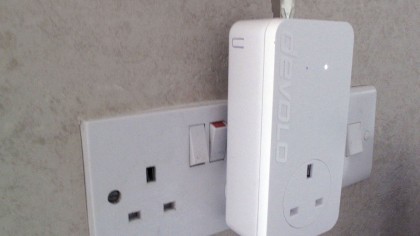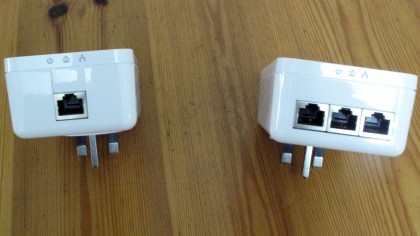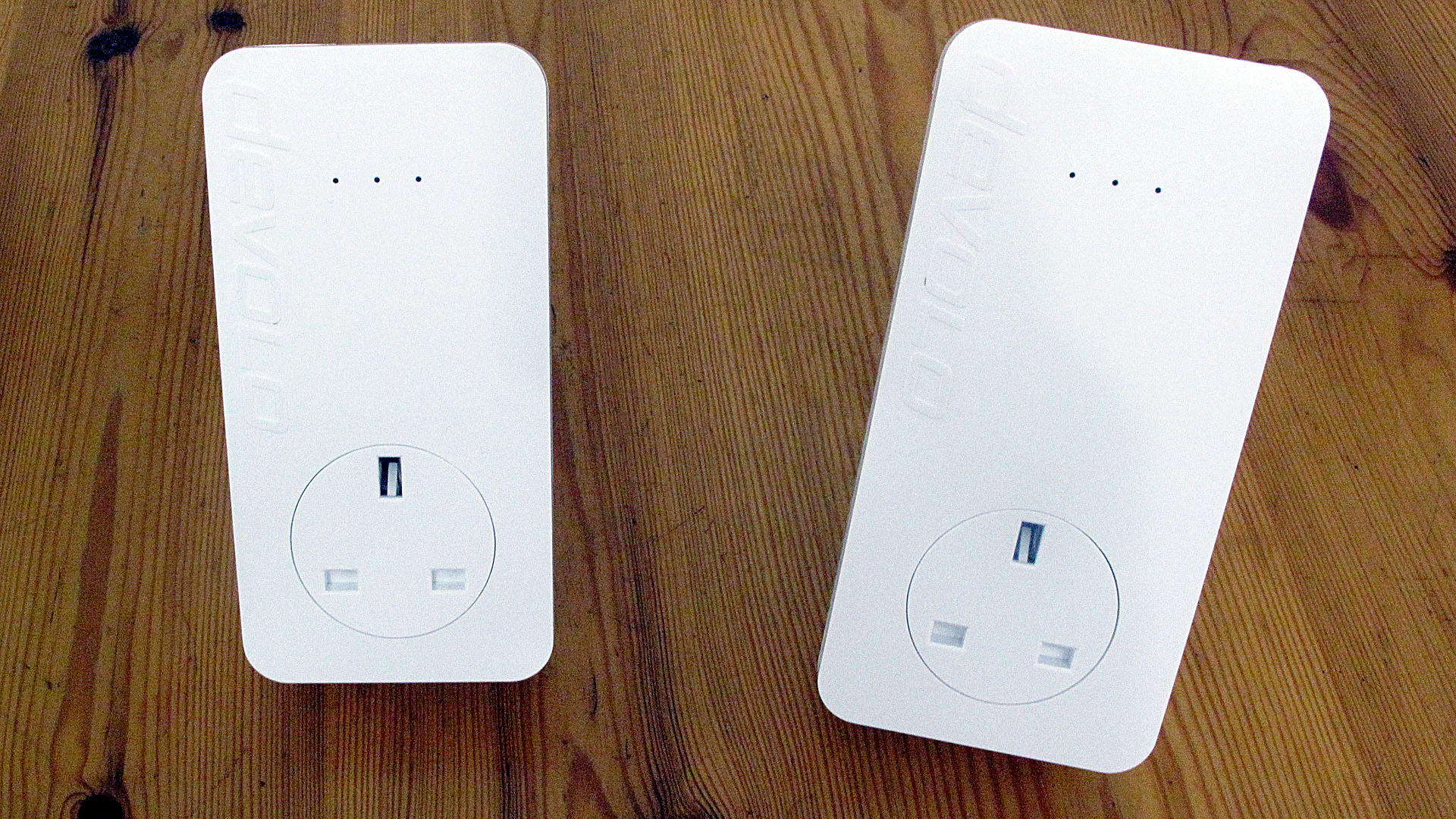TechRadar Verdict
Easy to use and now faster than ever. The only drawback to these HomePlugs is their price.
Pros
- +
Uses all three pins for data transfer
- +
Runs cooler than before
- +
Significant speed increase
- +
Excellent Cockpit software
- +
One plug has three Ethernet ports
Cons
- -
A little bulky
- -
Not cheap
Why you can trust TechRadar
HomePlug networking products using devices such as those in the Devolo dLAN 650 Triple Plus Starter Kit (£120, about $200, AU$215) is an excellent solution to wireless network problems. If your home – or indeed small office – Wi-Fi doesn't reach every corner of the building, perhaps because of thick walls or blind spots, with a pair of HomePlug adaptors, you can extend an Ethernet connection into even the most difficult-to-reach places.
In a nutshell, a HomePlug is a box with an Ethernet port, which plugs into a mains socket. They're simple to use. You simply plug one of the two adaptor units contained in this starter kit into the wall near your router, and connecting it to the router itself using one of the supplied Ethernet cables.
You then plug the other adaptor unit into another wall socket and connect it to the device you wish to network, again using Ethernet. The device – an internet radio, perhaps, or a media streamer, or even your laptop – then connects to your router, and therefore the internet, using your household electrical wiring as an extension of the Ethernet cables. It really is that simple.
After setting up your initial two-plug HomePlug network, you can add adaptors to connect more Ethernet devices. Some units, such as Devolo's own Wi-Fi Anywhere range, also offer wireless access points, so you can connect Wi-Fi devices as well as Ethernet. And as long as they conform to the HomePlug AV standard, you can even mix different brands of adaptors.

There are plenty on offer. The Linksys Powerline HomePlug AV2 Kit PLEK500 is very cheap, but lacks some of the extra features offered by the Devolo dLAN 650 Triple+ Starter Kit. Netgear's Powerline 500 Wi-Fi Access Point are compact and good value, but don't have a pass-through whereby you can plug a second electrical device into the HomePlug adaptor itself, so you don't lose a mains socket to the HomePlug. Devolo's own dLAN 500 Wi-Fi Network Kit doesn't offer pass-through sockets either, but you get three HomePlug adaptors, two of which create wireless access points for Wi-Fi connectivity.
Whichever brand you opt for, make sure they're no slower than 500Mbps. Older units, offering speeds of 200Mbps or slower, are best avoided. The new Devolo dLAN 650+ series, such as the Devolo dLAN 650 Triple+ Starter Kit, offer a maximum transfer speed of up to 600Mbps. You can mix 600Mbps, 500Mbps and even 200Mbps adaptors on the same network, but connections between differing plugs will reach only the slower maximum speed.
Devolo's dLAN 650 Triple+ Starter Kit contains two HomePlugs, both of which feature pass-through sockets. The smaller of the two has a single Ethernet port, while the large one has three ports. Just the thing if you need to network more than one Ethernet device in the same room.

The new plugs are also packed with new technologies that really improve performance. The first thing you notice as you take them from the box are that the air vents offered by the older 500Mbps adaptors are gone. As the new dLAN 650+ range use less energy than the older plugs, they don't get hot enough to require ventilation.
Where previous HomePlug adaptors used the plug's live and neutral pins to pass data to the electrical wiring, these new Devolo dLAN 650 Triple+ models also use the earth pin. A chip inside the adaptors calculates which of the three pins will give the best results, and automatically switches data transfer to that pin. We're told these are the first HomePlugs in the world to use all three pins in this way, a feature Devolo is calling 'Range+ Technology'.
For the record, the 650+ plugs are so called as the '600' reflects the maximum speed of 600Mbps, the '50' represents the fact that it uses third pin and the '+' demonstrates the Range+ Technology. Not the clearest of monikers.
